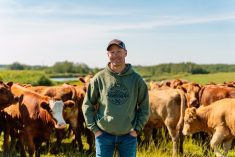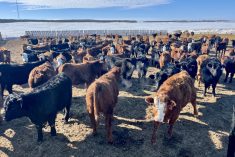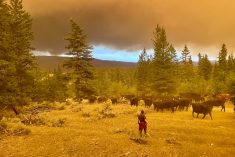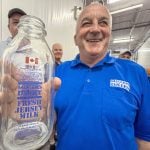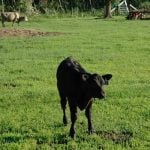Perhaps livestock photography is not the first occupation people think of in the beef sector. However, professional images create an opportunity to build relationships, add value and promote livestock on the farm level and far beyond.
The Browarny name is synonymous with livestock photography. For decades, Walt Browarny, Allan’s father, was well known for his high-quality work profiling prominent cattle, stock events and more.
Today, his son, Allan, continues the tradition with his professional livestock photography company ShowChampions Livestock Photography. Based in Alberta, his business takes him to many places, capturing shots of cattle everywhere from the back forty to the most prestigious livestock events in the world.
Read Also
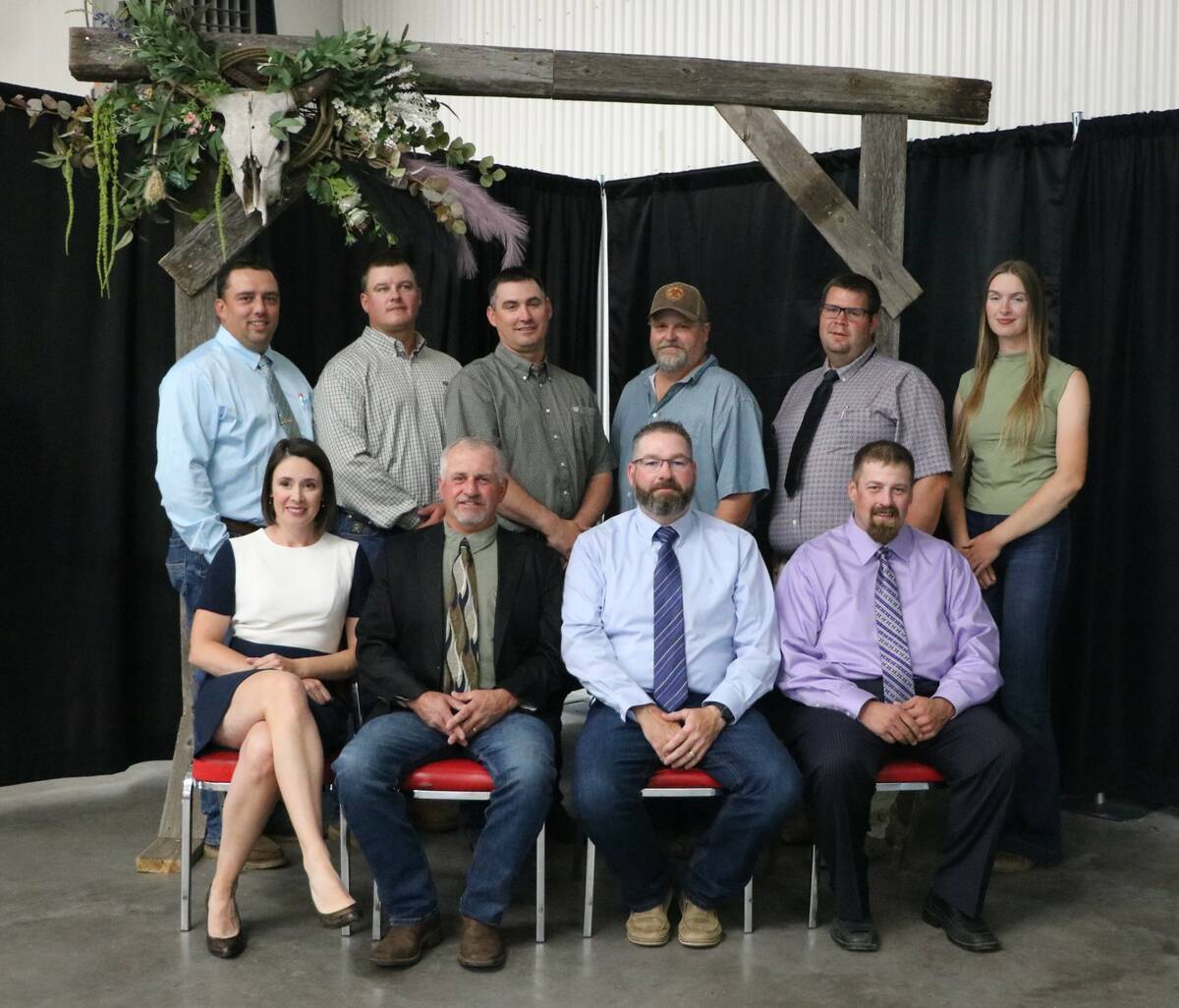
Purely Purebred: Outstanding Young Angus Breeder, Junior Limousin Herd Building Incentive winners and more
News from Canada’s purebred beef industry, including show results, board election results, research and more
Images with staying power
A foundation of the family business philosophy has been to help livestock producers establish brand value and take their beef operations to the next level with professional photos.
“Marketing is key, and showing off the product is really important,” says Browarny.
“We don’t realize that it all starts with an image.” Providing designers with a professional photo to work with streamlines the creation of a catalogue or ad, he explains.

“You want people to look at that picture and you want it to have an impact on the viewer.”
With how competitive the cattle industry is today, the right images are important in the purebred cattle sector as well as livestock and agriculture as a whole, Browarny says.
“It’s a way for producers to capture more value from within the industry.”
- RELATED: Love for photography leads to film career in beef industry
- RELATED: Newcomer pursues passion for farming and photography
Family pictures
Initially, Browarny didn’t see himself following in his father’s footsteps.
“He wasn’t the type of teacher that would have the patience to sit down and really lay things out.”
Rather, Browarny set out to work in the television industry and studied broadcasting. It was an avenue that Walt encouraged because he had a vision that videos would be the way of the future for livestock marketing.
“We did start to shoot a lot of videos at the National Western Stock Show (in Denver) and Agribition and on farms and ranches,” says Browarny.
Later, when a photographer was sick, Browarny was pulled in to cover the Horned Hereford show in Denver at the last minute. That experience made him realize photography would be his career path.
“I stepped up with the Hasselblad (camera), and I covered the whole event at the backdrop.”
There were some anxious moments while everyone waited for the film to be processed to learn whether the experiment paid off.
“The proofs got back, and, you know, I’ll never forget the words of my dad when we sat down. He looked at them kind of quietly, and I’m a little bit nervous. He said, ‘Boy, we’re a team.’ And that just electrified me.
“We were fortunate that we got along really well for the most part.”

Today, Browarny’s teenage daughter Sophia often accompanies him out on the job.
“Because I’m away so often, I love the fact that she can travel with me and how much she enjoys it,” he says, adding she’s proven to be an asset.
“She’s 100 per cent fluent in Spanish, which helps me a lot, because a lot of the ranches we go to, the people that I’m working with are Spanish speaking.”
The future is wide open and Browarny is encouraging Sophia to broaden her horizons and pursue her educational goals.
“You know, someday, if she can come back and has a plan to expand our business, great, but I’m not pushing her to do what I do, because she sees how hard it is, she sees the stress.”
Details, deadlines and delivery
Managing a photo shoot can be a challenge when your subject is a 2,300-pound bull, the weather is unpredictable, or you are on a strict schedule.
“I’ll lay awake sometimes before a big photo shoot because I start questioning myself and going over things in my head,” says Browarny. It can be stressful travelling somewhere and watching the forecast, he adds.
“I take into account the climatic condition and the animal. Most importantly, you’re dealing with animals and it’s kind of an uncontrolled environment to a certain degree.”
To set up for a successful shoot, Browarny says it is important to allocate adequate time.
“Quite often I’ll travel a fair distance to do that photo shoot, so I try not to put my jobs so close that I’ve got to run out on that customer I’m working for.”

He aims to ensure his clients feel they are getting a return on their investment. Whether he is shooting at a backdrop or on-farm, there is pressure to produce good work.
“It’s one thing to get the quality photograph. It’s another thing to make sure that you stand behind what you do and meet deadlines.”
Navigating human dynamics in high-stress environments requires attention too, explains Browarny. When shooting big events, he emphasizes building a quality team that he can trust.
Browarny has covered some of the most notable global livestock events but maintains he doesn’t have a favourite. “I think they all have something a little unique to offer.
“Just when I think I visited the nicest place, I go somewhere else.”
A global perspective
Creating connections is something that Browarny values. “In this industry, it is the relationships, the incredible people, from the mom-and-pop breeders to the prominent business people in the world.
“It seems when everyone walks in the barn, we’re all on the same level playing field. That’s been really neat to see.”
He credits travel as a source of inspiration but also admits it is a challenging aspect of his job. “It’s tough being away from home, missing out on a lot of things, not being a traditional dad, per se.”
However, exposure to different livestock operations and people has shaped how he approaches his business and craft.
“It’s the opportunity to see so many different places with different cultures and different people and realize that what we do at home, with cattle or showing or whatever, even the style of how they show is not necessarily the right way.”
He has observed how beef is celebrated in other parts of the world relative to Canada. In his experience, he often sees mainstream media in South America highlight everyday aspects of beef production.
“Countries like Brazil, they put a lot of emphasis on the livestock agriculture industry, they put a lot of value on food. Perhaps here we take it for granted a little bit.”
Browarny does see a promising shift in the mindset of Canadian beef producers. “The young people are taking it more and more seriously like a business. The beef cattle industry is a big industry, and it needs to be run like a business, whether you’re a small operator or a big company.”
Trailblazing transition to digital
“My father was all about technology.”
While Browarny nudged the company toward digital, his dad’s biggest protest was that they didn’t move in that direction a year sooner.
Relying on film had its challenges.
“I used to run to the local photo lab, and we’d be anxious and get all the film processed,” says Browarny, adding that they would often shoot 20 or 30 rolls per day at livestock exhibits. “You’d be at the mercy of multiple things before you finally saw your film.”
The cost of keeping up with technology has always been a top challenge, says Browarny, but the benefit has been their ability to be digital disrupters, with, for example, instant delivery of digital images.
The business prioritized technology and invested significantly into developing the initial ShowChampions website that launched in 2008.
Both individual clients and livestock events embraced their shift to digital. “We were very much a disrupter in the industry, being ahead of the curve with technology.”
Browarny is also a founding partner of PhotoServe, an e-commerce platform for many diverse event photographers.
While technology has had a profound effect on his business, Browarny points out that it is not a substitute for quality.
“I don’t rely on a computer to make the shot good. From film to digital, some things have changed, but the fundamentals of photography remain the same.”
Browarny’s exciting career in livestock photography in some ways parallels that of his ranching clientele, persevering through highs and lows. In that way, they’re no different than many operations, he says. Looking through those photos, he realizes he’s been to amazing farms and ranches all over the world, he adds.
“We’ve stood the test of time because I guess I’ve always been a believer in what we’re doing. This is what I’m passionate about.
“Honestly, to this day, I still get butterflies when I show up to do a photo shoot, even though I’ve been doing this for over 30 years.”






